House on the Rock, Part the Second

Yesterday, I was going great guns, trying to catch up my novel word count, when I noticed that the broadband link was out on the modem. What followed was more than an hour on the phone with a nice lady in Bangalore, resetting and reconnecting the modem several times, until word came through to India that there was a local router problem in parts of Chicago. Argh. So, the upshot was I ended up writing only about 500 words last night, and tonight the muse has turned her back on me utterly... so I figured I'd flex my fingers at the keyboard anyway and post a second installment of our adventures at House on the Rock.
Once you have toured the house itself, the endless displays of crazy collectables begin. The photo above, taken near the entrance to the Mill House (the next part of the tour), only hints at the hangar-sized warehouses of stuff by which you are about to be overwhelmed.
The first themed area of interest is the Streets of Yesteryear section. It consists of brick pavement, concrete trees, flickering faux gaslights, and nostalgic storefront displays--and you haven't set a foot outside. Of course, one of the first windows--that of a toy store--contains a coffee klatch of creepy dolls:
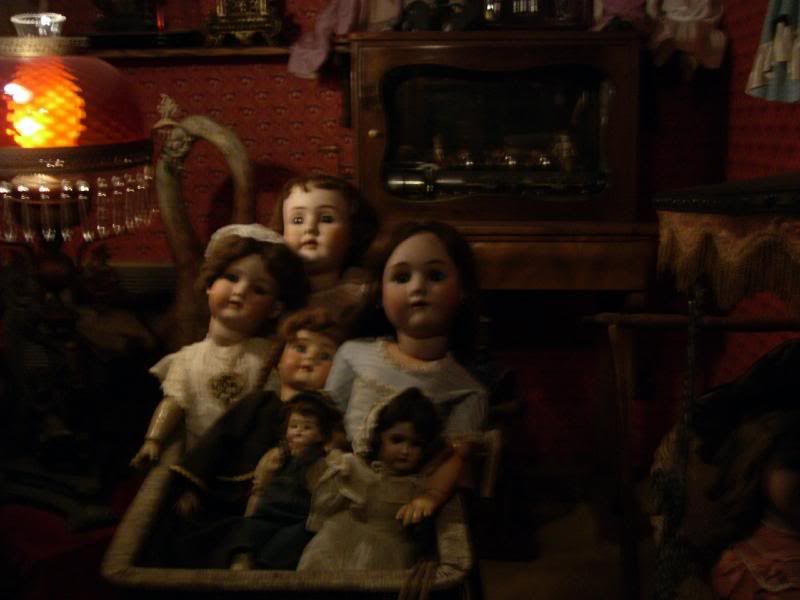
There are a number of collections displayed as wares in various storefronts--Faberge eggs, clocks, apothecary equipment...
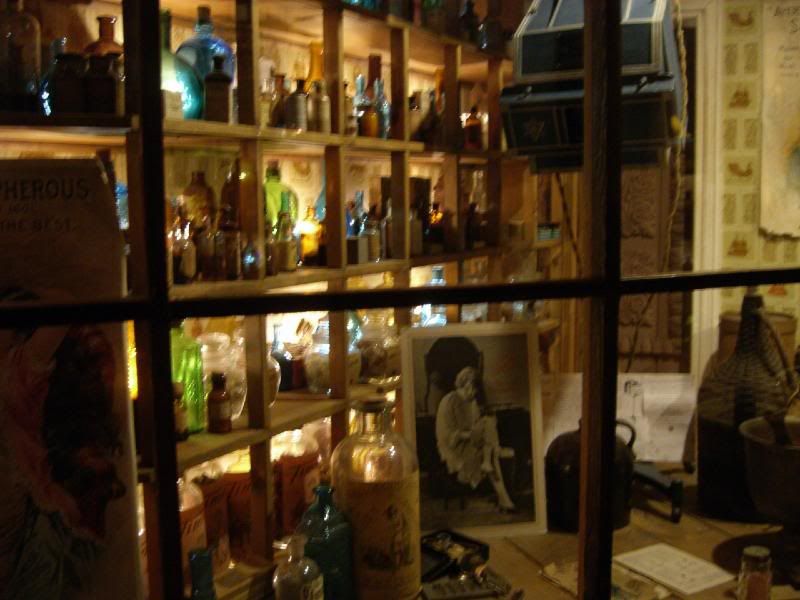
Interspersed amid the cluttered storefronts are various mechanical arcade tableaux from--I'm guessing here--the Gilded Age. You can get them to run by using one of the tokens available in vending machines throughout the attraction. (The music machines--more on the mother of all those in moment--are also run by inserting tokens into their coin slots.) Several of these illustrate the death of some kind of wastrel; this one is "Death of a Drunkard":
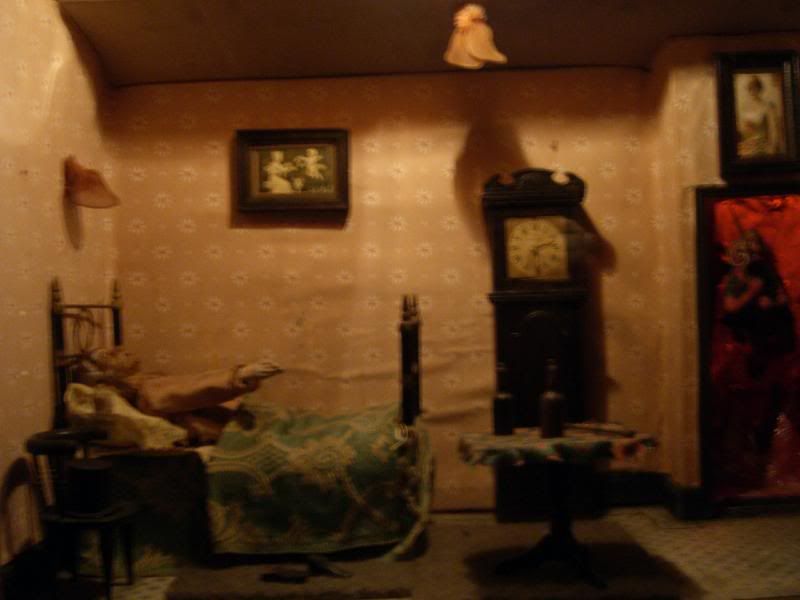
And this one is "Death of a Miser":
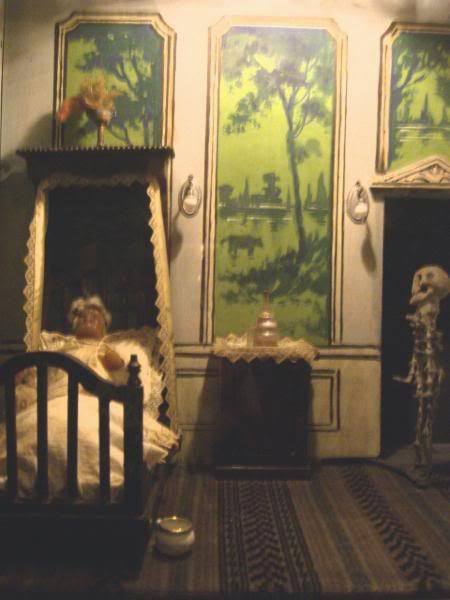
There's a magician and his assistants--this mechanical marvel from the mystic East performs a magic trick at the drop of token:
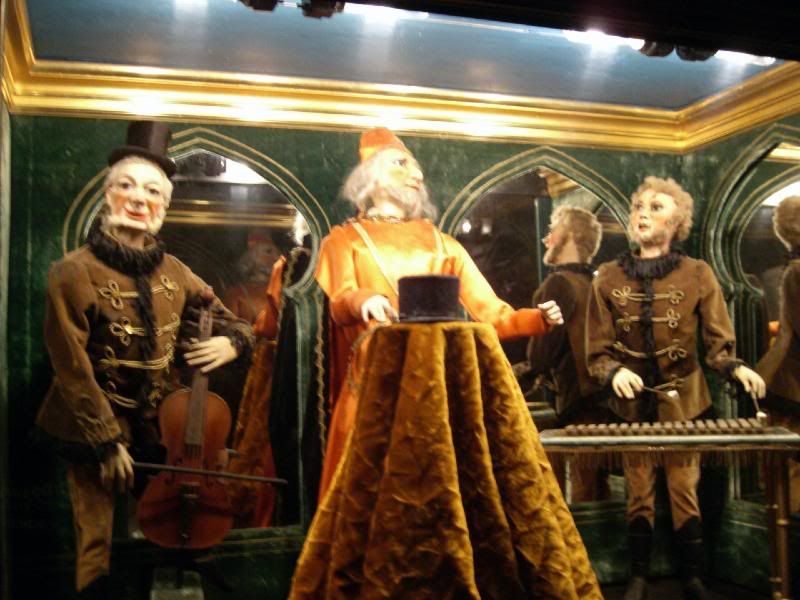
And I'm not sure what this one does (or even, really, what it IS)--we didn't expend a token on this one, but it does look intriguing.
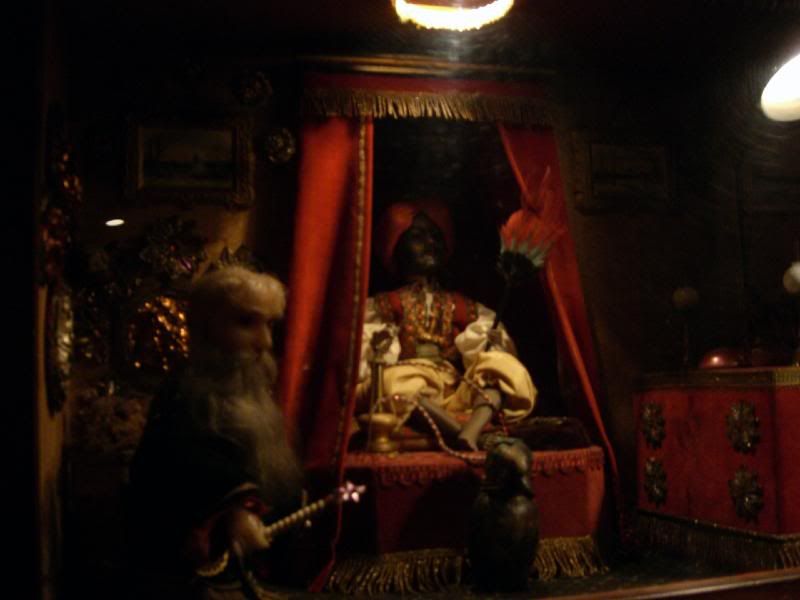
And, true to form, there is yet another shop window full of o, so creepy dolls:
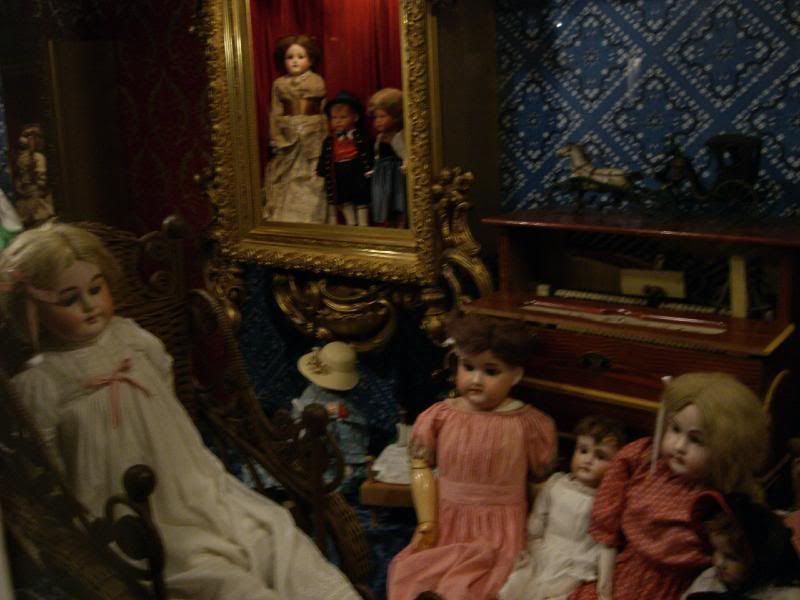
Then, suddenly, someone drops several tokens in a hulking machine at the far end of the Street[s] of Yesteryear, and the blaring splendor of THE GLADIATOR wheezes--I mean, blasts--forth!

Now, the effect of this cacophonous calliope has been dampened somewhat (I hate to be the one to report it!) due to its having been tuned up quite a bit since our last visit. In the past, this bellowing behemoth had been so out of key and its percussion elements so out of kilter that it was painful--but wondrously amusing--to hear. Alas! Someone has tinkered with perfection and brought its various components into some semblance of tonality and regular tempo. I'm sure that is only a temporary condition, though. Wisconsin winters are cold, and summers can be hot, and the building that houses Streets of Yesteryear and THE GLADIATOR is plenty drafty! It'll be back to its tone-deaf self in no time, I predict!
What can you expect in the next installment? The Heritage of the Sea, and beyond!
Labels: atonal calliopes, creepy dolls, House on the Rock, roadside attractions, Wisconsin

1 Comments:
I can never understand how someone can be endlessly amused by automatic music that doesn't sound good. Sure, it's funny and even entertaining the first 2 or 3 times, but I'd grow weary and annoyed after that time. With a nicely restored, well-in-tune instrument (such as a nice player piano, fairground organ or orchestrion) I can listen for a long time, and find that I am listening more to the music than to the instrument itself, which is a sure sign that it's playing well.
This can be compared with a really good silent movie accompaniment done by a great theatre organist: you find yourself not paying attention to the music, but drawn more and more to what is happening onscreen, to which you feel a better connection because of the music. If there was no music, or worse, poor or inappropriate music, the connection between the audience and the people in the movie simply wouldn't be there, and it would be harder to watch.
Someone should restore that Faventia barrel piano in the doll room picture above, and put a coin drop on the outside to activate it. If they were really clever, they could also devise a way to automatically change tunes so visitors don't have to hear one tune played over and over again.
Regarding the Gladiator, it is not original, but is made from a Tangley Calliope that was taken apart and built into this monstrosity with added percussion, now playing an O-roll instead of an A-roll. I think both the orchestra bells at the top left, and the chrysoglott at the bottom right are from old theatre organs. (the following are links to sites about original Tangley and other calliopes)
http://www.carousels.com/bblack/calliope.php
http://www.mmdigest.com/Gallery/Calliope/index.html
Post a Comment
<< Home